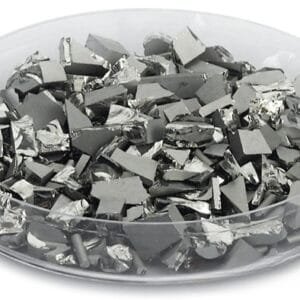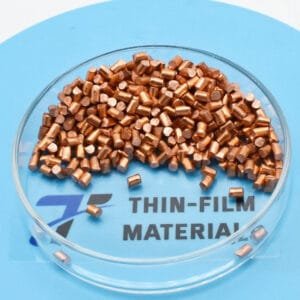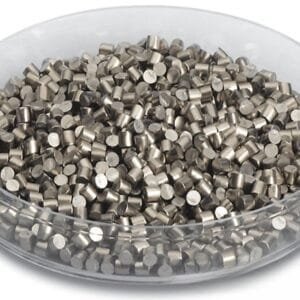Iron(II) Sulfide Evaporation Materials Overview
Iron(II) sulfide (FeS) evaporation materials are essential in various deposition processes to ensure the creation of high-quality thin films. Known for their high purity, these materials are crucial for applications in semiconductor manufacturing, optical coatings, and more. TFM excels in producing these materials with exceptional purity levels, reaching up to 99.9995%.
Specifications
| Material Type | Iron(II) Sulfide |
| Symbol | FeS |
| Appearance/Color | Gray Solid |
| Melting Point | 1,194 °C (2,181 °F; 1,467 K) |
| Density | 4.84 g/cm3 |
| Purity | 99.9% |
| Shape | Powder/ Granule/ Custom-made |
Applications
Iron(II) sulfide evaporation materials are widely used in various deposition techniques, including:
- Semiconductor Deposition
- Chemical Vapor Deposition (CVD)
- Physical Vapor Deposition (PVD)
These materials are primarily utilized for:
- Optical Coatings
- Wear Protection
- Decorative Coatings
- Displays
Packaging and Handling
Our Iron(II) sulfide evaporation materials are carefully packaged and labeled to ensure easy identification and maintain quality during storage and transport. We prioritize preventing any potential damage to the materials throughout the entire handling process.
Contact Us
TFM is a premier supplier of high-purity Iron(II) sulfide evaporation materials, offering various forms such as tablets, granules, rods, and wires. We also provide custom shapes and quantities upon request. Additionally, we supply evaporation sources, boats, filaments, crucibles, heaters, and e-beam crucible liners. For current pricing and to inquire about materials not listed, please reach out to us directly.


 MSDS File
MSDS File



Reviews
There are no reviews yet.